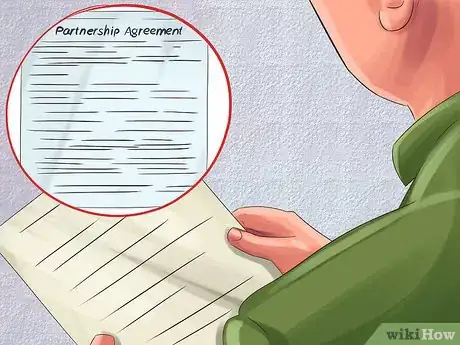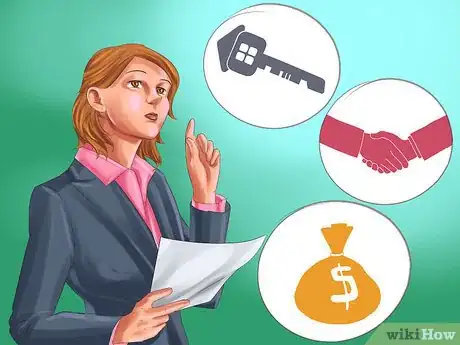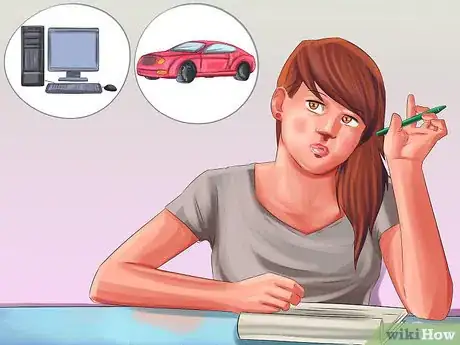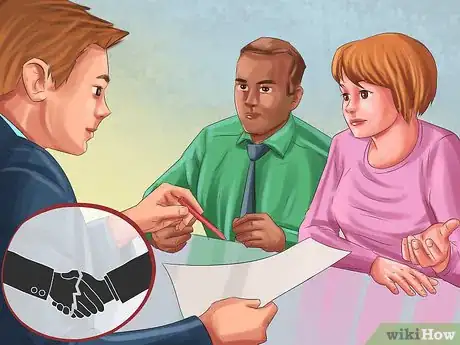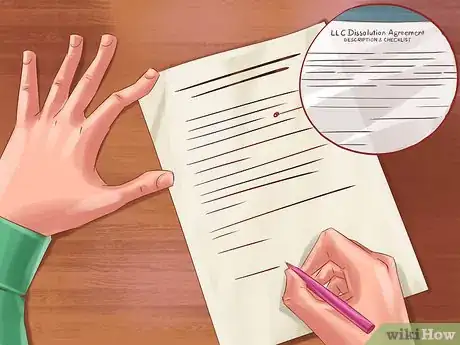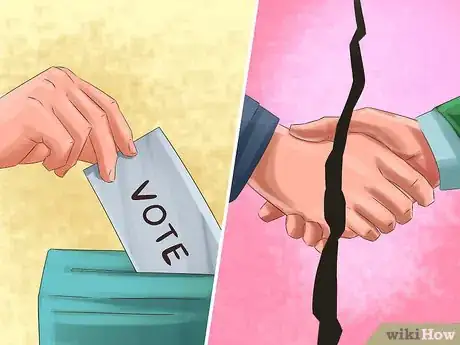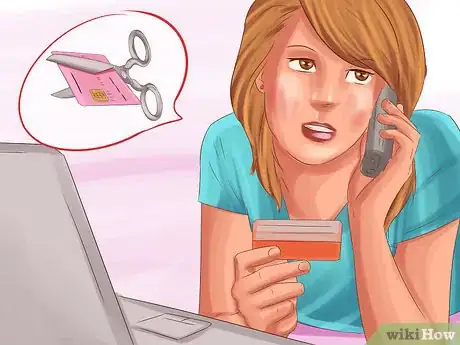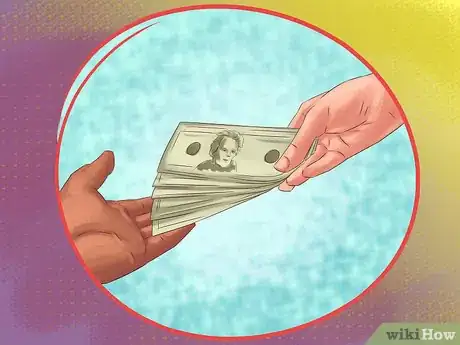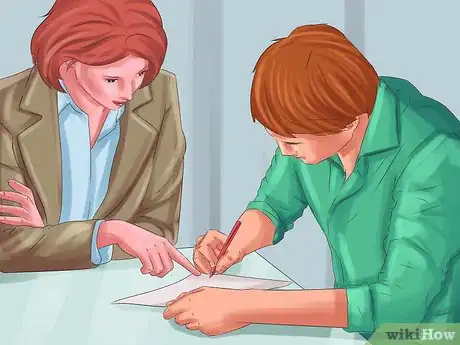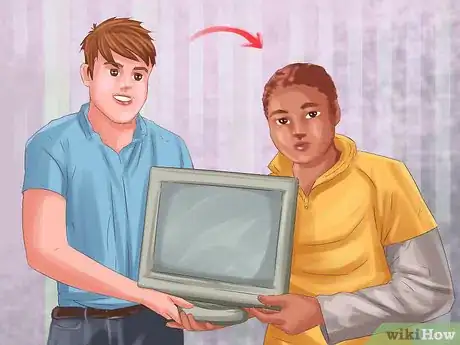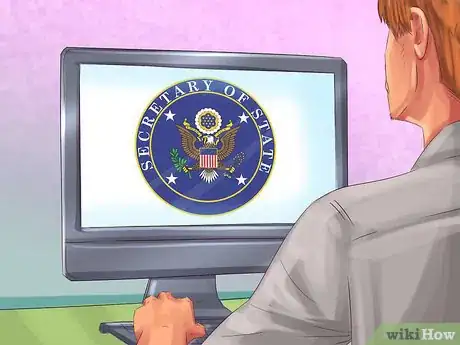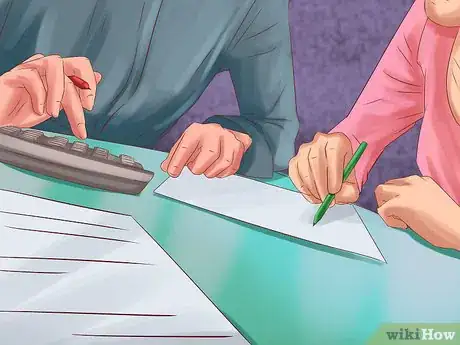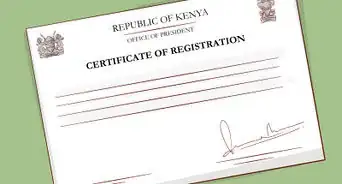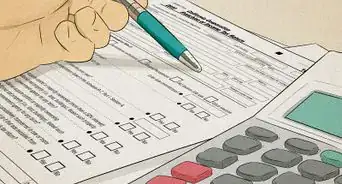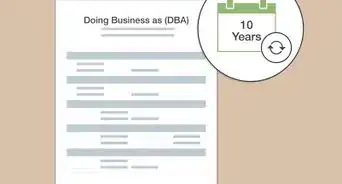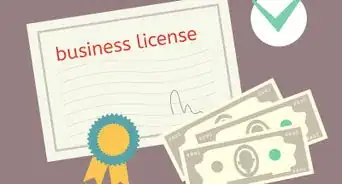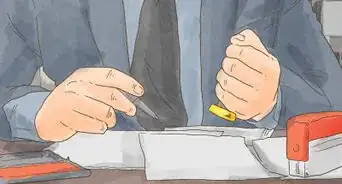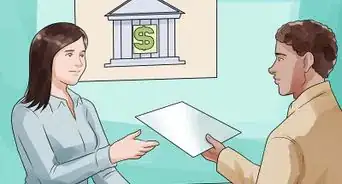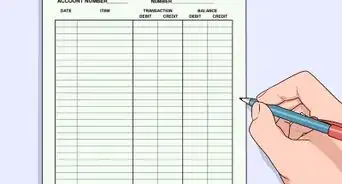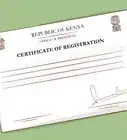This article was co-authored by Clinton M. Sandvick, JD, PhD. Clinton M. Sandvick worked as a civil litigator in California for over 7 years. He received his JD from the University of Wisconsin-Madison in 1998 and his PhD in American History from the University of Oregon in 2013.
There are 9 references cited in this article, which can be found at the bottom of the page.
This article has been viewed 57,632 times.
Partners decide to end a partnership for a variety of reasons. For example, one of the partners may have died or withdrawn from the partnership, and the remaining partners may not want to continue with the business. Alternately, the business may have been unsuccessful and you can no longer afford to operate the partnership. Regardless of the reason, you can end a partnership by paying off the partnership’s liabilities and filing a dissolution form with your Secretary of State.
Steps
Preparing to End the Partnership
-
1Read the business partnership agreement. You should have signed a partnership agreement before forming the partnership. This agreement should have laid out how to dissolve the partnership. Find your copy and read it. If you cannot find your copy, then ask one of the other partners for a copy.
- Some people form general partnerships without agreements. In that case, you will need to come to an agreement with the other partners as to how the dissolution should proceed.
- If you can’t come to an agreement, then typically all liabilities and assets will be divided by a judge equally between the partners. You may want to consider mediation if you and the other partners cannot come to an agreement on how to wind up the business partnership.
-
2Look at the partnership’s finances. Before ending the partnership, you should consider the state of the current business. For example, you should consider what obligations the partnership has outstanding (e.g., contracts, liens, mortgages). Is there client work that remains unfinished? Ask yourself whether now is a good time to end the partnership.
- Also consider how much the business is worth. If the partnership dissolves, each partner receives a share of the partnership’s assets and liabilities according to their ownership interest. You should try to get some sense of how much might be left over after all liabilities are paid.
- You might also want to have the partnership appraised. You can find a business valuation service on the Internet. By using a professional, you gain a better sense of the value of the partnership.
Advertisement -
3Identify any property you loaned to the partnership. It is common for partners to bring personal property or even real estate to the partnership. For example, you may have lent office space in a building you own to the partnership. Also, you might have donated a car or other personal property (like a computer) for the partnership to use. This property should have been identified in the partnership agreement.
- Make sure the property is in good working condition. If something has been broken or damaged, then you should press to be compensated for the damage.
- If there was no partnership agreement, then go through the business and identify what property you loaned to the partnership. Absent a partnership agreement, this property might legitimately belong to the partnership. Nevertheless, you can ask the other partners to let you leave with it once the business ends.
- To bolster your claim to the property, you should get documentation that shows you were the original owner. For example, if you have loaned a car to the partnership, then you should have the original registration in your name. Likewise, if you lent personal items (like a computer or phone), then look for the original sales receipt. These documents can help you later on, if you end up going to court with the other partners.
-
4Meet with a lawyer. You definitely will want a business lawyer involved if you are dissolving the partnership. Dissolution is a complicated procedure, and partners remain liable for the debts of their partnership. Accordingly, you will want a qualified attorney on hand to operate as a sounding board.
- To find a qualified business attorney, you should visit your state’s bar association and use its referral program. You can also ask for recommendations from any other lawyer you or the partnership have used in the past (such as a real estate lawyer).
-
5Discuss how to dissolve the partnership. If you have a partnership agreement, then dissolution procedures should be spelled out in the agreement itself. Be sure to follow them. However, if you don’t have a partnership agreement, then you need to discuss the particulars of dissolution with the other partners so that you can all come to agreement. Consider the following:[1]
- How will you divide present liabilities? These are the debts that the partnership has already accrued.
- How will you handle future liabilities? Because each partner is personally liable for the debts of the partnership, then you could be on the hook if the other partners do not pay their share of the debts.
- Have people identified personal property that they want returned? Has it been damaged and should the partnership pay to fix the property?
- Will one partner take the lead on the dissolution? If so, how should other partners be notified?
- Who will retain the partnership books and papers after dissolution? How will storage costs be paid for?
-
6Consider mediation. If the partners are struggling to reach agreement about how to divide liabilities, then you should consider mediation. With mediation, all interested partners will meet with a third party neutral (the mediator). The mediator listens to all of the partners and helps them reach a solution that is mutually acceptable.[2] The mediator does not act as a judge or state who is right or wrong. Instead, the mediator facilitates exchange and the formulation of creative solutions to problems.
- Your local courthouse probably has a list of mediators; it may even run a mediation program. You should contact the court clerk to check. Mediation is not free. Instead, mediators often charge between $70 and $400 an hour for their services.[3] Nevertheless, this amount is probably much less than what a lawsuit between partners will cost.
Ending the Business Partnership
-
1Sign a dissolution agreement. Based upon your discussions (or mediation), you and the other partners should draft and sign a dissolution agreement. The purpose of the agreement is to terminate the original partnership agreement. You should have a lawyer help you draft a dissolution agreement for all parties to sign.
- The dissolution agreement explains how the business will be wound up. It might nominate one partner to take the lead on the liquidation. Also, the agreement should contain a release which prohibits partners from bringing lawsuits related to the partnership after dissolution.[4]
- After the document has been drafted, each partner should take some time to review it and also meet with an individual attorney.[5] You want to make sure that the agreement protects your rights and interests.
-
2Dissolve the partnership formally. Follow whatever procedure is outlined in the partnership agreement. Typically, all of the partners will vote. Make sure to record the vote.[6]
-
3Cancel credit cards. If the partnership has credit cards or access to other lines of credit, then you should cancel them as soon as possible. You do not want one of the partners to start racking up debts now that the partnership is on the verge of being dissolved.
- Call the credit card company as soon as possible and provide any information requested.
-
4Pay off debts. Upon dissolution, the partnership needs to pay off its liabilities. The partnership agreement should state the priority in which debts will be paid. Typically, you will need to pay off debts owed to external creditors before reimbursing other partners for loans made to the partnership.[7]
- Even if you are not the partner responsible for writing checks, you should ask to stay apprised of how the settling of debts is going. Ask to see the books as often as you like and get copies of any cancelled contracts or other financial documents.
-
5Get paid. After all other liabilities have been paid, remaining capital and profits will be distributed among the partners.[8] The partnership agreement should explain how profits are to be allocated. Typically, they are divided according to the ownership interest of each partner.
- Generally, if there is no money left over but debts remain, then those liabilities will also be divided between the partners based on ownership interest as well.
- If you do not have a partnership agreement, then liabilities and profits will be divided however the partners agree. This area is often ripe for lawsuits, so if you come to an agreement with the other partners, then be sure to put that agreement in writing.
-
6Take back your property. If you loaned property to the partnership to use, then you need to repossess it. For example, you might have let the partnership use office space in a building that you own. Make sure to repossess the keys to the building.
- If you loaned a computer, laptop, or cell phone to the partnership, then physically re-take possession.
-
7File state forms. You probably will need to notify your state of the partnership’s dissolution. Visit the Secretary of State’s website for your state to find appropriate forms. If you did not have to file a registration or certificate with your state upon formation of the partnership, then you might not be required to file a dissolution form. Nevertheless, it could be a good idea to file one just the same.[9]
- Your lawyer should be able to find the forms and complete them for you. Make sure that you get a copy of any form filed with the state.
-
8Meet with an accountant. Dissolving a partnership entails no direct tax consequences. However, tax liability might have accrued, e.g., because partnership property has increased in value.[10] For this reason, it would be wise to meet with a tax professional or with an accountant.
-
9Notify others of the dissolution. You need to let clients, customers, and distributors know that the partnership is dissolved.[11] Send each a letter and keep a copy for your records.
- You might also want to publish a notice in the newspaper that the partnership is dissolving. This publication would put others on notice that they should not do business with any partner who claims to be representing the partnership.[12]
References
- ↑ http://www.nolo.com/legal-encyclopedia/free-books/small-business-book/chapter12-12.html
- ↑ http://www.ninthcircuit.org/about/programs/dispute-resolution-services
- ↑ http://www.mediate.com/articles/SoskinL1.cfm
- ↑ https://www.legalzoom.com/assets/legalforms/legalzoom%20partnership%20dissolution%20agreement.pdf
- ↑ https://www.legalzoom.com/assets/legalforms/legalzoom%20partnership%20dissolution%20agreement.pdf
- ↑ http://www.nolo.com/legal-encyclopedia/free-books/small-business-book/chapter12-12.html
- ↑ http://business-law.lawyers.com/small-business-law/winding-up-business-and-distributing-assets.html
- ↑ http://business-law.lawyers.com/small-business-law/winding-up-business-and-distributing-assets.html
- ↑ http://www.nolo.com/legal-encyclopedia/free-books/small-business-book/chapter12-12.html
About This Article
Ending a business partnership with an individual or company can get complicated, so you’ll need to bring in a business lawyer if you haven’t already. One party can dissolve the partnership, even if the others don't want to, but they'll have to pay reparations to cover their losses. Once you've got a lawyer, meet with the other parties and come to an agreement on how you will divide liabilities and who will keep any shared property or assets. If you struggle to come to an agreement, meet with a mediator who can help you remain objective. Once you’ve settled on the terms of your partnership dissolution, follow the procedure outlined in the agreement, which will usually involve all of your partners voting, then signing a dissolution agreement. You’ll also need to notify your state of the partnership’s termination. Visit your Secretary of State’s website to find the appropriate forms. For more tips from our Legal co-author, including how to notify your clients, customers, and distributors of the dissolution, read on!
